Plants
I also grow my own plants. The main focus is the Enchinodorus radicans broadleaf. Also known as the amazone sword plant broadleaf. By the way, the name "broadleaf" does not implicate the width of the leaf by any means. It's just a herbicide term to divide this plant from other grasslike vegetation.
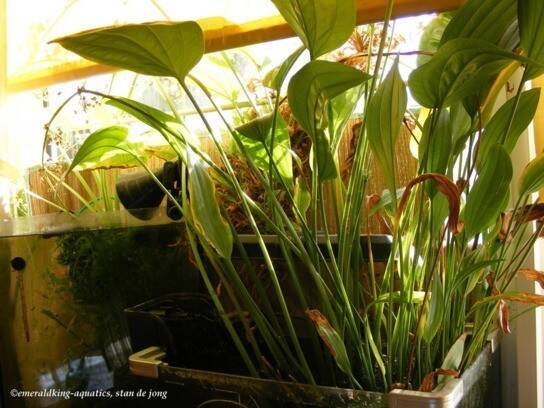
I've started off with just a small plant and in time it just grew up till a height of approx. 1 meter. Just with this single plant, I've harvest a huge amount of young sprouts.

This Enchinodirus radicans is originated from South-America where it's considered a swamp plant. There are two groups of Enchinodorus plants. The real aquatic ones and the swampy ones. The Enchinodorus radicans belongs to the Alismataceae family. This plant is also partially an epiphyte.
To keep this plant well in an aquarium, is to put it in bright light or half shadow. Temperature rates of 18 till 30°C are great rates for the plant to develop into a strong plant. Becoz' of the height this plant is able to reach, I do prefer to keep these plants in open tanks. It's just great to watch such a plant grow out of the water. When the plant is doing well, it will develop a stem which grows out of the water as well. On this stem on several places flowers will occur. After the flowers have bloomed, new young plants sprouts are developing. They just grow in the air and they are being fed by the stem and by epiphytical influences.
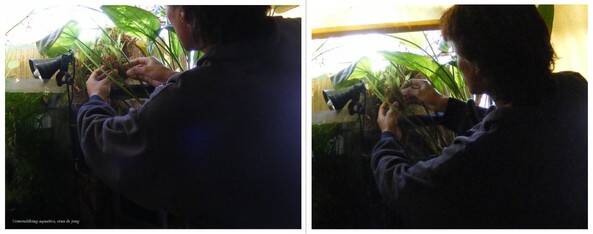
I harvest the young sprouts each time. And I won't cut the stem for with some patience, new flowers will develop at the same spot and again young sprouts will occur. When the cluster of young sprouts grow in the air, they get more heavier and the stem will lower to the surface (water or soil), There they will root and become as big as the mother plant.

Left: This sprout has already developed above the water surface as a real sword plant. This is also not a real aquatic plant but a swamp plant. And giving it daylight does do wonders as well.
And if the plants overgrow then it must be thinned and or trimmed... you can reuse the the trimmed parts as well.
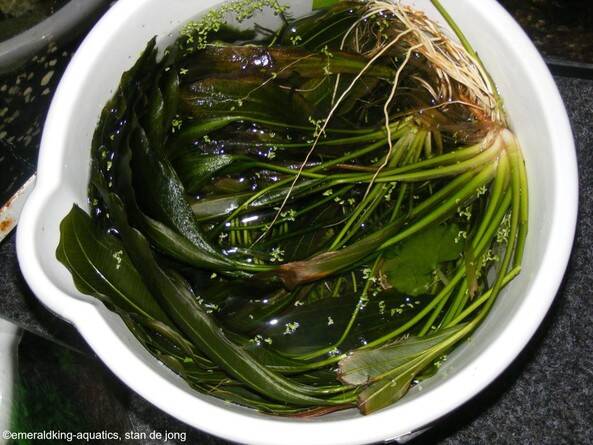
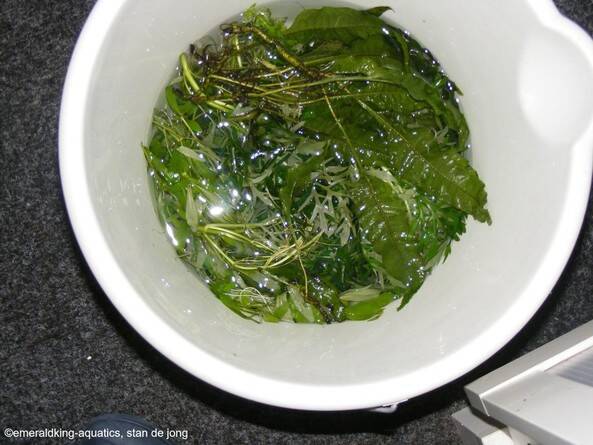

Left: Guppy grass (Najas quadalupensis).
One of my other favorites is the Najas guadalupensis also known as guppy grass. With sufficient light, this plants grows massively. But for the growth itself, it doesn't need much light. A temperature between 22 - 28°C is ideal for this plant. .A lot of breeders use this plant as a good hiding spot for fry. Like a lot of plants remove heavy metals, toxins, ammonia, nitrites and nitrates from the water while producing oxygen, this plant consumes almost every nutrient in the fishtank, giving algae hardly the chance to grow.
Below: Guppy grass (Najas quadalupensis).

Left: Members of the Hygrophila family as shown in the picture below are also very ideal to use as floaters but also putting them into the substrate.
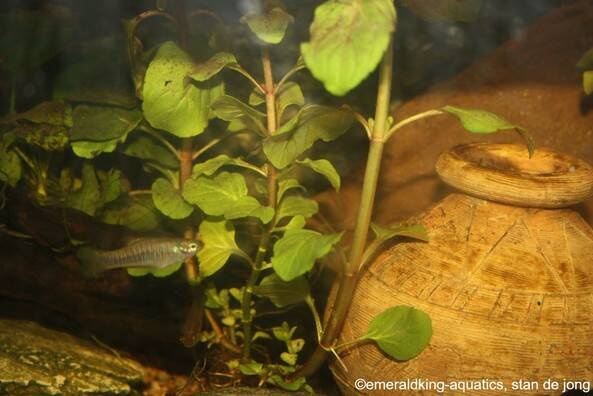
Left: Water mint (Mentha aquatica) in a tank with Priapichthys annectens.
There are lots of plants that are specifically aquatic. A number of them are meant for fishtanks and there are aquatics plants that are meant for ponds. I also use pond plants in fishtanks. But you do need to know that daylight is of importance if you'll use pond plants indoors. if you can offer that, they'll do just fine indoors.
Below: Water mint will grow above the water surface. That's a great thing to see... Especially, when there's no lid on the tank.
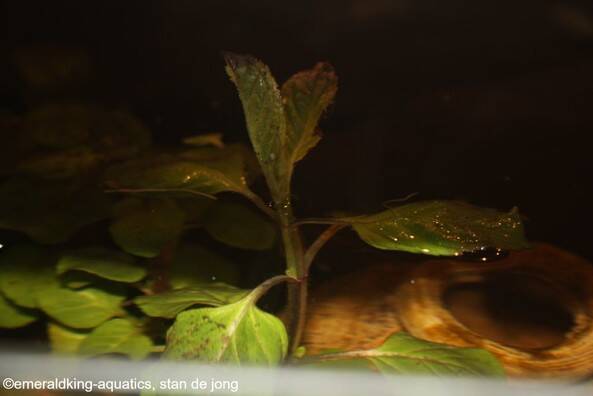

But you can also use a number of plants in an aquaponic situation. Like overhere in this open paludarium. I've used a normal mint plants that's put in wet soil. The soil is wet because it's in the water of the paludarium. Some rocks seperates the soil from the water where fish swim in. Through the rocks, the water contacts the soil.
And the mint releases a very nice smell in the fishroom
But also outdoors I use several kinds of plants. They're mostly pond plants. And I love all members of the Myriophyllum family. They're fast growers (especially if you offer sufficient daylight) and good hiding spots. And they do give enough shadow to fish that like to shelter to have a break from the heat of the sun. A lot of people don't know that even fish can have a sunburn.
Below: Myriophyllum brasiliensis.

All members of the Myriophyllum family can also be kept indoors (sufficient daylight is a must).
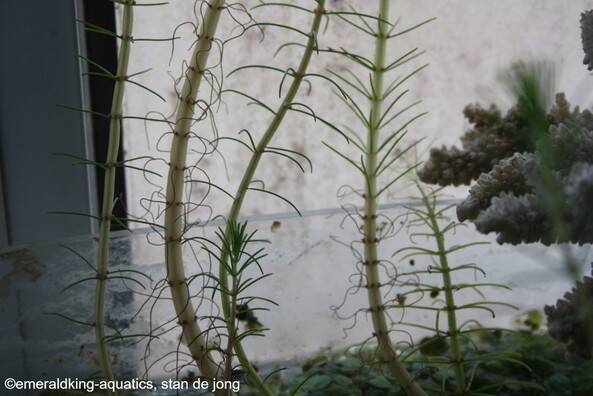

Above: Myriophyllum crispata growing out of an open fishtank on the windowsill.
If we discuss plants in fishtanks or ponds, we won't skip the socalled oxygen plants. It's not particular that only these plants give oxygen. For all plants do. But the fact that they release oxygen directly into the water. Therefore, we call them oxygen plants. But again, all aquatic plants and non-aquatics do the same thing.
Oxygen plants live completely under water. This means that they absorb all their nutrients directly from the water. This applies also to the CO2 that these plants need. Oxygen plants hardly form roots. The absorption of nutrients takes place through the leaves. Because these plants don't need to form roots and woody skeletons, they are able to grow fast under the right conditions.
One of the best known oxygen plants is waterweed (Elodea) and also known as pondweed. The picture below shows waterweed.
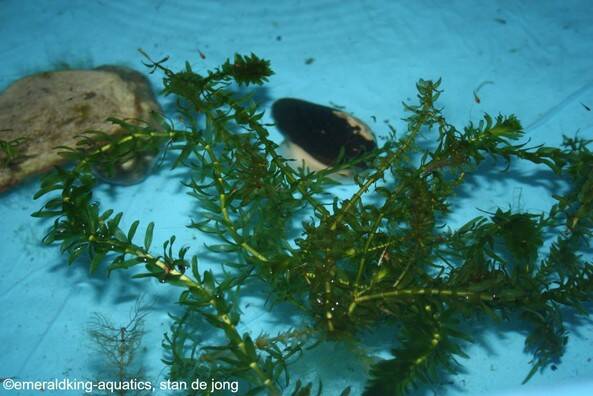
All types of oxygenating plants can only grow in hard, mineral rich water. If the water becomes too soft (due to rainfall for instance) the growth of oxygenating plants decreases. The plants will then slime and die. Nutrients will then remain in the water and the water becomes cloudy.
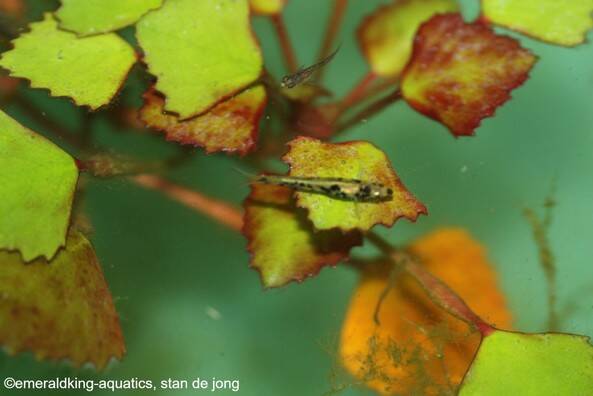
Left: Water chestnut (Trapa natans), a good floater.
Floating plants can give shelter to all kinds of fish. Floating plants (floaters) are aquatic plants that float loose on the water surface and absorb nutrients from the water with their floating roots. The gas exchange (oxygen and CO2) takes place directly with the atmosphere via the floating leaves. Floating plants therefore don't produce oxygen for the pond or fishtank and don't absorb CO2 from the water.
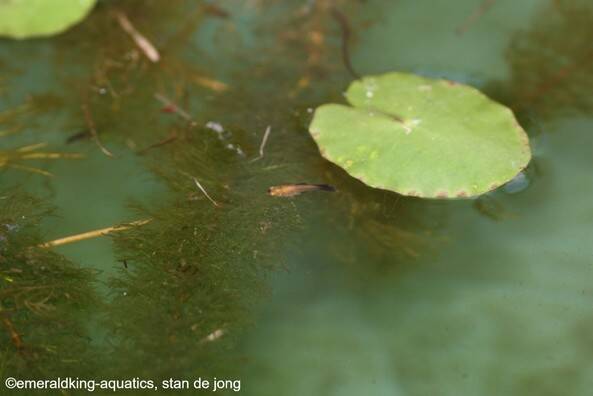
Left: Floating heart (Nymphoides aquatics). This plant will develop yellow flowers. The genus name refers to their resemblance to the water lily (Nymphaea).
Floating plants can be very useful as an aid to clear turbid water. These plants also grow under conditions in which oxygen plants can't survive (soft water and floating algae).
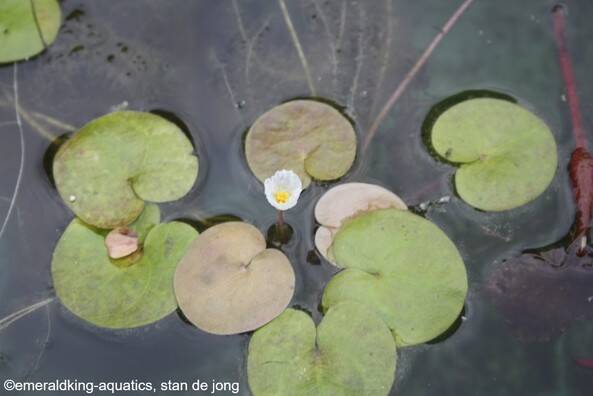
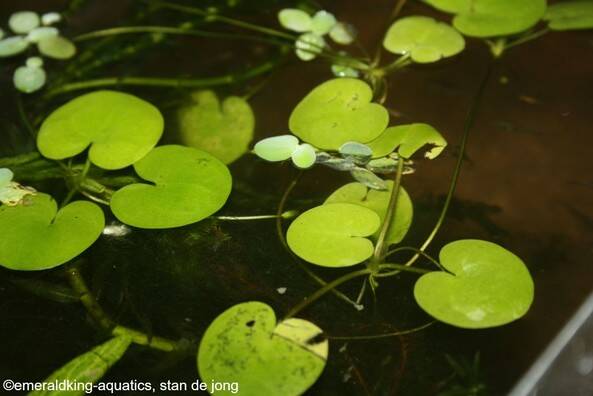
Above & below: European (common) frogbit which gives tiny white flowers. frogbit multiplies itself fairly quickly via suckers at the roots. The leaves feel thick.

Small floaters with a good root system like the ones shown above and below, will provide good hiding spots for fry to shelter. These plants do reproduce pretty fast as well.

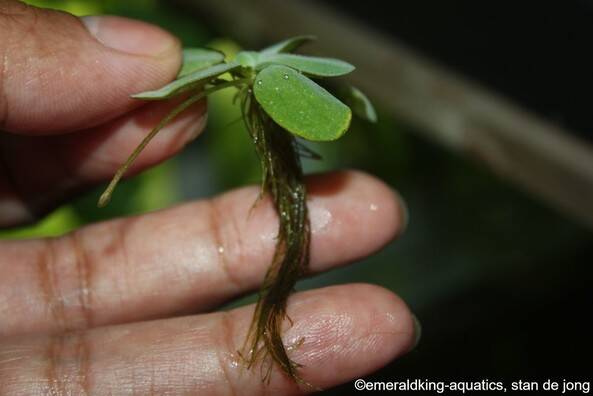
For all floaters goes that the more nutrients in the water, the longer the root system will be.

